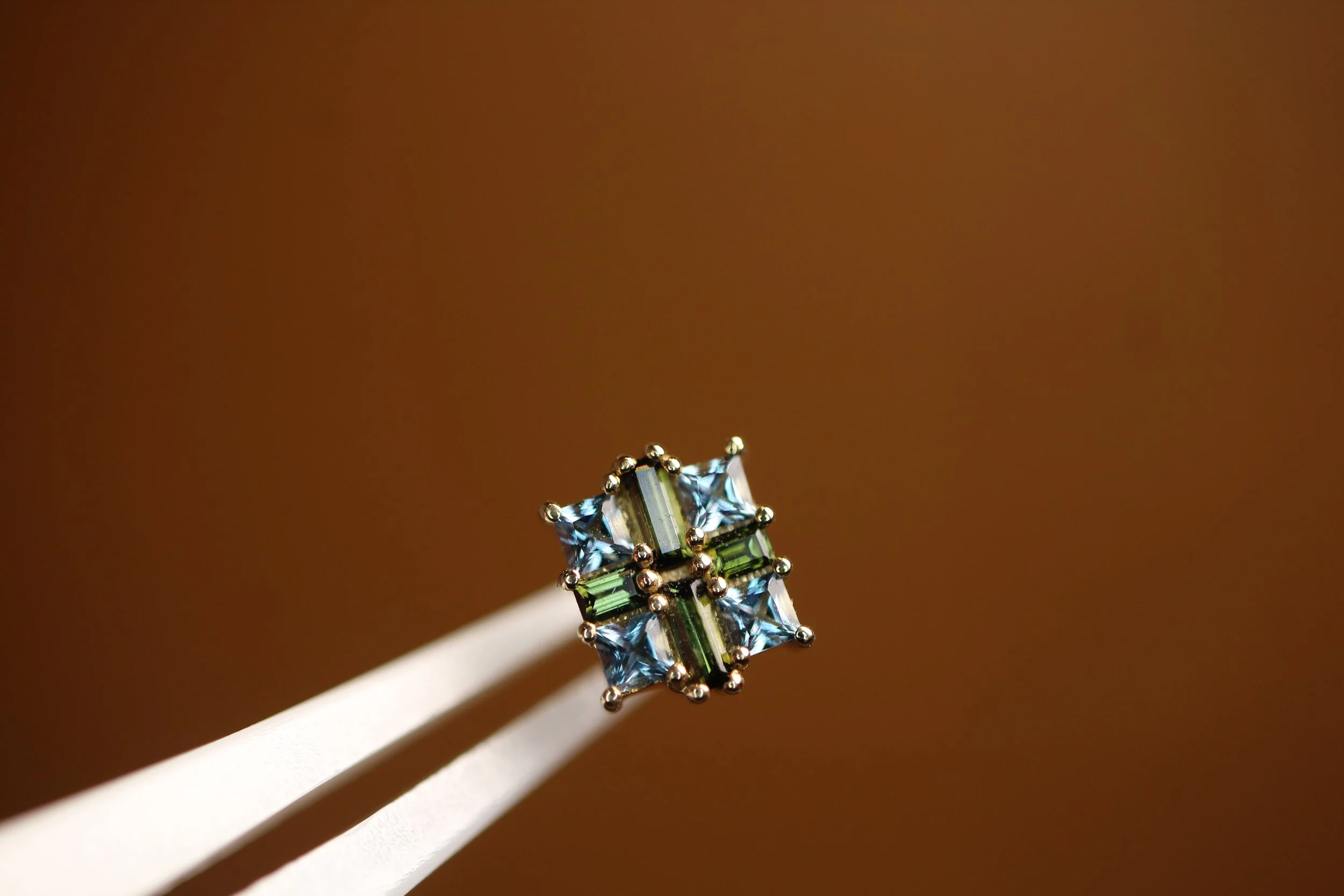
Jewelry types and how they work
~
Jewelry types and how they work ~
When bending your own tops at home it’s important to know these few things:
You should only be inserting the pin about 1/3 of the way and then bend. Don’t bend to close to the gem of the piece as you risk making a 90 degree bend and then the top is damaged and out of warranty.
You can bend the pin to allow for the type of fit your lifestyle allows (we recommend if you do not plan to change it frequently or check it frequently, make a 20 degree bend)
If you have too much of a bend you will not be able to get the top to slide into the post without the potential of snapping the pin off the decorative top. So don’t go more than about 25 degrees in the bend.
Gold tops are softer which means they can have a harder time holding bends.
If you are ever unsure or you don’t want to do it your self, come in to the studio.
Threaded Jewelry
Threadless Jewelry
Threadless also known as “push pin” or “press fit” was invented in 1997 and does not have any threading to it. Threadless is a tension- based system where the decorative end has a tiny pin and it slides into a post with a hole to fit that pin drilled into it. The more of a bend you give the pin on the decorative top, the more hold you have in the post. Be careful over time with this jewelry as small snags can make the pin straight, which in turn the top will have less tension in the post.
Threaded jewelry has one or more components that “screw” into each other. We only use internally threaded jewelry as the standard is a smooth surface on the jewelry that is going into your piercing channel and when completely threaded, there is no gap in the jewelry to be pinched by or for crust to buildup in the jewelry.
Threaded jewelry is a good option for larger gauge piercings, especially when you want the ability to change out the piercings on your own.
Some things to keep in mind when dealing with threaded jewelry:
Threaded jewelry is not always universal. A 16 gauge post from us may not work with a 16 gauge bead from the internet. This also includes companies that we also interact with. (Example: A 4 gauge bead from Anatometal doesn’t fit into a 4 gauge barbell from Industrial Strength.
Threaded jewelry, like any other jewelry, does need to be checked periodically to ensure secure fit. To do so, you’ll hold the post in place and twist the jewelry clockwise to tighten until you feel resistance.
Fixed Bead Rings
Fixed bead rings (FBRs) are a modified version of a captive bead ring, these allow all the benefits of a captive bead ring while being more secure due to the bead being soldered onto the ring. This means you will never lose the bead.
A few things to know about fixed bead rings:
FBRs are usually made with ASTM F-136 Implant Grade Stainless Steel or 14-18k gold to be easily bent for insertion and removal
We can special order options where the bead also has a gem set into the bead, these can be special ordered and we have a few options in the studio!
Bending frequently without professional assistance can result in the ring becoming distorted and could result in a fee being passed onto you to have it adjusted.
If you prefer a more ornate style to replace the bead, we also can special order those in 14-18k gold. Check out our pricing page for details on how to order something special.
Hinge Rings or “Clickers”
Hinge Rings (Also known by “Clickers”) are rings that have a snap closure that allows for smooth insertion and removal. These are great options for those who cannot have healed piercings visible.
A few things to know about hinge rings:
Hinge rings were primarily made for septum piercings, however, they can be worn in any place that can have a hoop!
Like it’s street name, the way to confirm this ring is closed you will hear an audible “click” sound as the wearable snaps into the rest of the ring.
Hinge rings typically contain ornate elements such as set stones in gold but they can be made as a simple ring. They can also be created in implant grade Titanium
Improper opening of these rings can cause the hinge to become loose and fail to snap close. If you experience this, please come into the studio and we can see if it meets the terms of the lifetime warranty due to manufacture defect.
